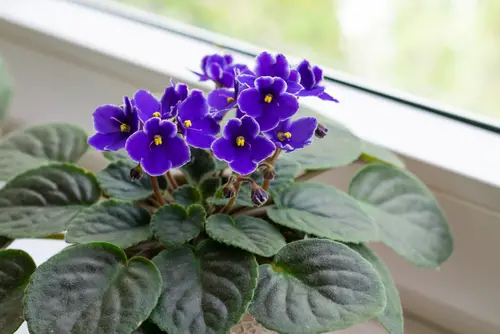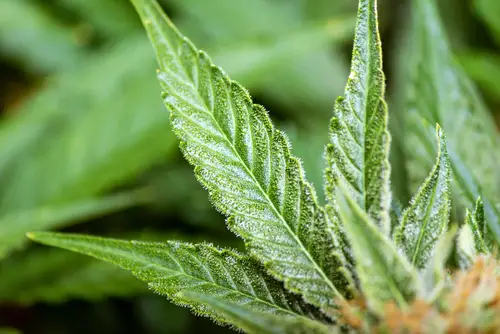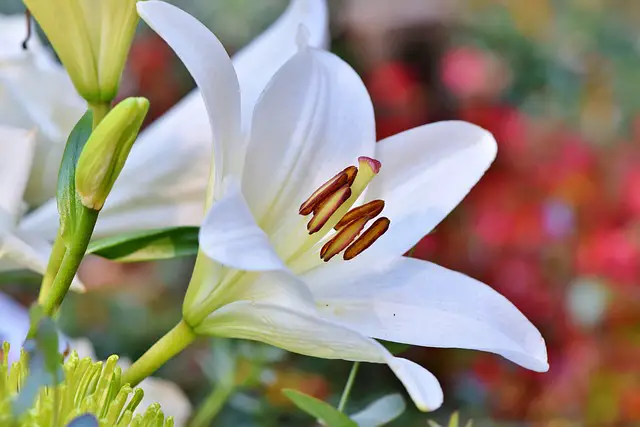Pistils are the hair-like structures that grow on the female cannabis plant, and they play a crucial role in the plant’s reproduction process. They are an essential part of the flowering stage, and their color change is an indication of the plant’s maturity. However, if the pistils start turning brown prematurely, it could be a sign of a problem.
There are several reasons why pistils may turn brown early. Nutrient deficiencies, overwatering, underwatering, and light burn are some of the most common causes. It is essential to understand the underlying cause to prevent further damage to the plant.
The color change of the pistils is significant because it indicates the plant’s readiness for harvest, and early browning can lead to a reduction in yield and potency.
Key Takeaways on Pistils Turning Brown Early
- Premature browning of pistils may indicate a problem with the plant.
- Understanding the causes of early browning is crucial to prevent further damage.
- Early browning can impact the yield and potency of the plant.
Check out these other popular picks:
- Why Are My Peonies Turning Brown?
- Why Are My Mandevilla Leaves Turning Brown?
- Why Are My Magnolia Leaves Turning Brown?
Understanding Pistils

Pistils are an essential part of the female cannabis plant’s reproductive system. They are hair-like structures that emerge from the plant’s calyxes and serve as the plant’s female reproductive organs. Pistils play a crucial role in the pollination process and are essential in the production of seeds.
During the flowering stage, the pistils start to emerge from the plant’s calyxes and begin to grow. They are usually white or light-colored when they first appear and gradually change color as they mature. As the plant approaches the end of the flowering stage, the pistils will start to change color from white to brown or orange.
The color of the pistils is an essential indicator of the plant’s maturity and readiness for harvest. When the pistils are white or light-colored, it indicates that the plant is not yet ready for harvest. However, when the pistils start to turn brown or orange, it is a sign that the plant is approaching maturity.
It is essential to monitor the color of the pistils closely, as they can provide valuable information about the plant’s growth and development. If the pistils start to turn brown prematurely, it could be an indication that there is something wrong with the plant.
Pistils Turning Brown Early – 5 Common Problems
When pistils begin to turn brown prematurely, it can be a sign of several underlying issues. Here are some of the common causes of early browning and what growers can do to address them.
1. Temperature and Humidity
Temperature and humidity levels can have a significant impact on the health of cannabis plants. High temperatures can cause the pistils to dry out and turn brown prematurely. On the other hand, low temperatures can slow down the growth of the plant and cause the pistils to brown early.
Growers should aim to maintain a temperature range of between 20-28°C during the day and 18-24°C at night. Humidity levels should be kept between 40-60% during the vegetative stage and 40-50% during the flowering stage.
2. Lighting Conditions
Lighting conditions can also impact the health of cannabis plants. High-intensity lighting, such as HPS lights, can cause the pistils to dry out and turn brown prematurely. Growers should ensure that the plants are receiving the right amount of light and that the distance between the light source and the plants is appropriate.
3. Watering and Feeding
Overwatering or underwatering the plants can cause the pistils to turn brown early. Growers should ensure that the soil is moist but not waterlogged, and that the plants are receiving the right amount of nutrients. pH levels should also be monitored to ensure that they are within the appropriate range.
4. Pests and Diseases

Pests and diseases can cause damage to the plants, which can lead to the pistils turning brown prematurely. Spider mites are a common pest that can cause damage to the plants, and growers should take steps to prevent and control infestations.
5. Strain Characteristics
Finally, some strains may naturally have pistils that turn brown early. Growers should research the characteristics of the strains they are growing to determine if this is the case.
Significance of Color Change
As cannabis plants mature, their pistils undergo a color change from white to brown or amber. This change in color is a natural part of the flowering process and indicates that the plant is reaching the end of its life cycle. However, when pistils turn brown prematurely, it may indicate a problem with the plant.
White hairs or pistils are an important indicator of a healthy cannabis plant. They are an essential part of the reproductive process and are responsible for catching pollen from male plants.
As the plant matures, the pistils will start to turn brown and curl inwards. This is a sign that the plant is no longer producing new flowers and is ready for harvest.
When the pistils turn brown prematurely, it can be a sign of stress or nutrient deficiency. For example, boron deficiency can cause improper growth of plant leaves combined with discoloration and drying out, which can lead to premature browning of pistils.
Other factors that can cause premature browning include high temperatures, low humidity, and over-fertilization.
It is important to note that not all brown pistils are a cause for concern. As the plant matures, it is normal for some of the pistils to turn brown and curl inwards. However, if the majority of the pistils are turning brown prematurely, it may be a sign of a more serious problem.
Potential Damage and Solutions
Pistils turning brown prematurely can indicate several issues that can damage the overall bud growth. In this section, we will explore some of the potential damage factors and their solutions.
Pollination Issues

One of the main reasons for pistils turning brown is pollination. If the plant gets pollinated, the pistils will turn brown and start to wilt. This process can happen early in the flowering stage, and if left unattended, it can lead to seed production, which can reduce the overall quality of the buds.
To avoid pollination issues, growers should remove any male plants from the grow room and keep the humidity levels low. Additionally, growers should inspect the plants regularly to remove any hermaphrodite plants that can pollinate the female plants.
Stress Factors
Stress factors can also cause pistils to turn brown prematurely. The most common stress factors are temperature, light, and humidity. If the temperature is too high or too low, it can cause the pistils to turn brown. Similarly, if the humidity levels are too high or too low, it can stress the plant and cause the pistils to turn brown.
To avoid stress factors, growers should maintain the temperature and humidity levels within the optimal range. Additionally, growers should avoid sudden changes in the light cycle, such as switching from 18/6 to 12/12 abruptly. Gradual changes can help the plant adjust to the new light cycle and prevent stress.
Root Problems
Root problems can also cause pistils to turn brown. If the roots are damaged or infected with pathogens, it can affect the plant’s ability to absorb nutrients and water. This can lead to nutrient deficiencies, which can cause the pistils to turn brown.
To avoid root problems, growers should maintain the pH and PPM levels within the optimal range. Additionally, growers should inspect the roots regularly to detect any signs of damage or infection. Growers can also use coco or hydroponic systems to improve the plant’s root health and nutrient uptake.
Monitoring Pistil Health
When growing marijuana plants, it is important to monitor the health of the pistils, as they can provide valuable information about the plant’s overall health and readiness for harvest. Here are some ways to monitor the health of the pistils:
Using a Grower’s App
One way to monitor the health of the pistils is by using a grower’s app. These apps can provide information about the ideal growing conditions for the plant, as well as tips on how to diagnose and treat common plant problems. Some apps even allow growers to take pictures of their plants and receive personalized advice from experts.
Checking Trichomes

Another way to monitor the health of the pistils is by checking the trichomes. Trichomes are tiny, hair-like structures that grow on the surface of the plant’s leaves and buds. They contain the plant’s essential oils, which give marijuana its characteristic aroma and flavor.
To check the trichomes, growers can use a magnifying glass or microscope to examine the color and shape of the trichomes. When the trichomes are clear, the plant is not yet ready for harvest. When the trichomes turn cloudy or amber, the plant is at its peak potency and is ready for harvest.
Proper Ventilation
Proper ventilation is also important for monitoring the health of the pistils. Poor ventilation can cause the pistils to turn brown and die prematurely. This is because the plant is not getting enough fresh air and is becoming too humid.
To ensure proper ventilation, growers should use a fan to circulate the air in the grow room. This will help to prevent the buildup of humidity and ensure that the plant is getting enough fresh air to thrive.
Frequently Asked Questions
Why are my pistils turning brown earlier than expected?
Pistils turning brown earlier than expected can be a sign of stress or a nutrient deficiency in the plant. This stress can be caused by a variety of factors, such as high temperatures, low humidity, over or under watering, or insufficient light. It can also be caused by using too much fertilizer or not providing enough nutrients.
What causes pistils to turn brown prematurely?
Premature browning of pistils can be caused by several factors, including environmental stress, nutrient deficiencies, pests, and diseases. High temperatures, low humidity, and over or under watering can all cause stress to the plant, leading to premature browning of the pistils.
How can I prevent my pistils from turning brown too soon?
To prevent premature browning of pistils, it is essential to maintain a healthy growing environment for the plant. This includes providing the right amount of water and nutrients, controlling the temperature and humidity, and protecting the plant from pests and diseases.
Proper pruning and training techniques can also help to ensure that the plant is growing evenly and not experiencing undue stress.
Is it normal for pistils to turn brown at different rates?
Yes, it is normal for pistils to turn brown at different rates. This is because different parts of the plant may mature at different rates, depending on factors such as light exposure and nutrient availability. It is important to monitor the plant closely and harvest when the majority of the pistils have turned brown.
Can harvesting early affect the potency of my buds?
Yes, harvesting early can affect the potency of your buds. If you harvest too early, the buds may not have had enough time to fully develop, resulting in lower potency and a less desirable flavor and aroma.
It is important to wait until the majority of the pistils have turned brown before harvesting to ensure that the buds are fully mature.
What is the ideal time to harvest when pistils are turning brown?
The ideal time to harvest when pistils are turning brown is when the majority of the pistils have turned brown, but some are still white. This indicates that the plant is at its peak potency and flavor. It is important to monitor the plant closely and harvest at the right time to ensure the best possible results.

Hey, I’m Lisa and I’ve been an avid gardener for over 30 years. I love writing, talking and living in the garden! Feel free to connect with me on my socials below


